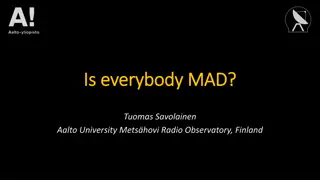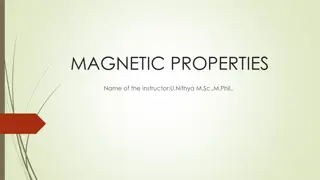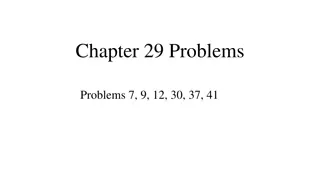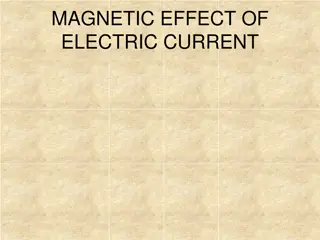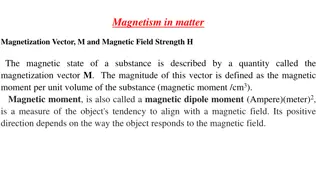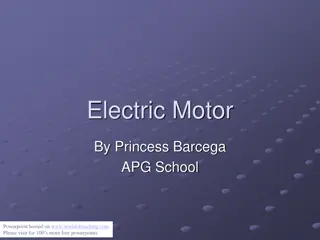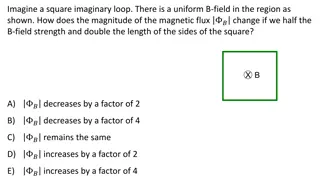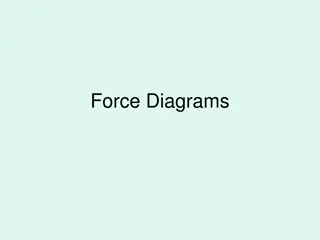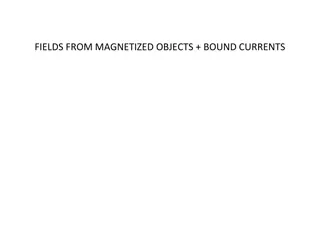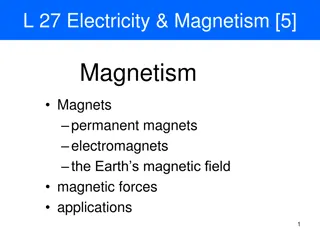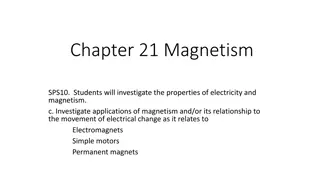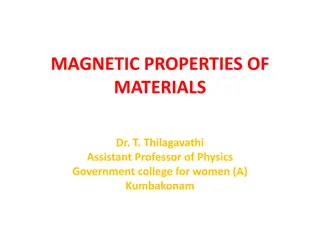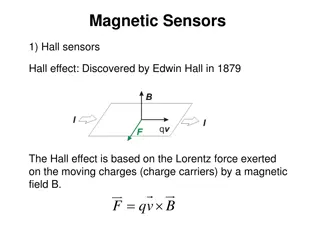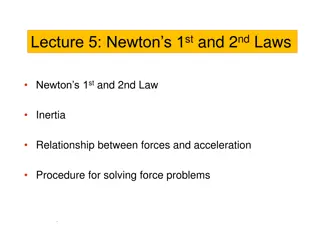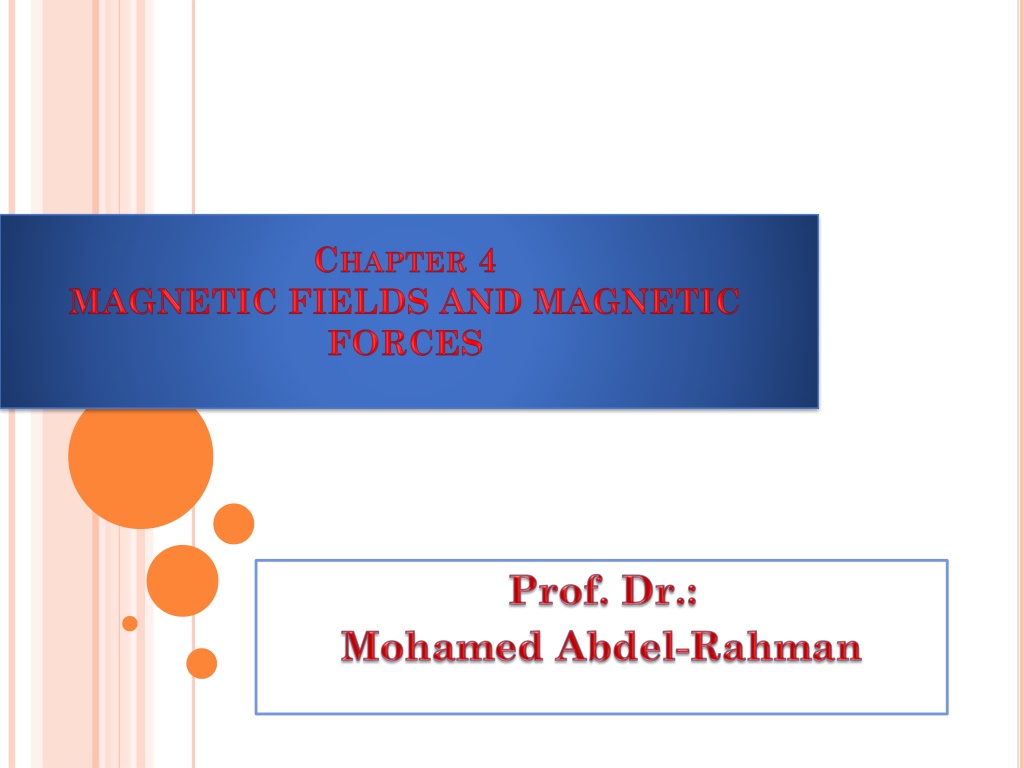
Exploring Magnetic Fields, Forces, and Properties
Discover the fundamentals of magnetism, including properties of magnets, causes of magnetism, magnetic field lines, magnetic flux, and the magnetic force on moving charges. Learn how magnetism is intricately linked to the behavior of electrons in materials and the interactions between magnetic fields and charges. Unravel the mysteries of magnetic forces exerted on moving charges and the concept of magnetic flux lines representing the magnitude and direction of magnetic fields.
Download Presentation

Please find below an Image/Link to download the presentation.
The content on the website is provided AS IS for your information and personal use only. It may not be sold, licensed, or shared on other websites without obtaining consent from the author. If you encounter any issues during the download, it is possible that the publisher has removed the file from their server.
You are allowed to download the files provided on this website for personal or commercial use, subject to the condition that they are used lawfully. All files are the property of their respective owners.
The content on the website is provided AS IS for your information and personal use only. It may not be sold, licensed, or shared on other websites without obtaining consent from the author.
E N D
Presentation Transcript
MAGNETIC FIELDS AND MAGNETIC FORCES Properties of Magnet 1-A magnet attracts iron pieces or iron fillings. The filings cling near the ends, at the (poles}) of the magnet. 2- The magnetization is zero at the middle of the magnet and maximum at the poles. 3- When a magnet is freely suspended so that it can swing in a horizontal plane, it comes to rest in N-S direction. N-pole points towards the north, and S-pole points towards the south. 4- First law of magnetism: '' like poles repel, unlike poles attract . 5- When a magnet is broken into pieces, each piece is found to be a magnet with two poles, i.e. no monopole magnet.
What causes magnetism? It is the spinning of the electrons in the atoms of materials, and the behavior of these electrons, which give a material its magnetic properties. Magnetic field: ''It is the region around a magnet in which a magnetic force is exerted''. We can describe magnetic interactions in two steps: 1-A moving charge or a current creates a magnetic field in the surrounding space (in addition to its electric field) 2- The magnetic field exerts a force F on any other moving charge or current that is present in the field. Magnetic field is a vector quantity and denoted by B . At any position the direction of B is defined as the direction in which the north pole of a compass needle tends to point.
The Magnetic Force on a Moving Charge: The magnetic force, FB, on a test charge, qo, moving with velocity v in a magnetic field, is The magnitude of the magnetic force is F = q v B sin , where is the angle measured from the direction of v to the direction of B . The force is perpendicular both to the velocity and to the magnetic field. Since the force is proportional to the velocity, charges at rest do not experience magnetic forces.
Magnetic Field Lines and Magnetic Flux The magnetic flux lines or lines of force represent the magnitude and direction of the magnetic field, i.e. it is vector quantities. ``Note that: 1- `The density of lines is proportional to the strength of the field (i.e. the lines are close together where the field is strong and vice versa). 2- The lines go from North Pole to the South Pole. 3- The lines never cross each other. Magnetic Flux and Gauss's Law for Magnetism We can divide any surface into elements of area dA. For each element we determine B the component of B normal to the surface at the position of that element. We define the magnetic flux d Bthrough this area as
Where is the angle between the direction of B and the line perpendicular to the surface. The total magnetic flux through the surface is the sum of the contributions from the individual area elements: Magnetic flux is a scalar quantity. In the special case in which B is uniform over a plane surface with total area A, B and are the same at all points on the surface, and
The SI unit of magnetic flux is called weber (Wb). Gauss's law for magnetism The total magnetic flux through a closed surface is always zero. Symbolically If the element of area dAis at right angles to the field lines, then B = B ; calling the area dA , we have That is, the magnitude of magnetic field is equal to flux per unit area across an area at right angles to the magnetic field. For this reason, magnetic field B is sometimes called magnetic flux density.
A Beam of Charged Particles in a Magnetic Field: Consider a beam of positively charged particles with velocity v .If this beam enters a magnetic field at right angle to its direction of motion, it will experience a force perpendicular to both velocity and magnetic field, i.e. it will be deflected. Circular motion: The beam will move in circular path if the velocity is small and the magnetic field is strong. In that case: Magnetic force = Centripetal force where R is the radius of the circle.
Application of motion of charged particles Velocity selector: In a region of crossed or perpendicular magnetic field B and electric field E perpendicular to v, the forces cancel when Only particles with speeds equal to E/B can pass through without being deflected by the fields The Magnetic Force on a Current Carrying Wire: The magnetic force FBon a segment of wire, L , carrying current, I, in a magnetic field, B , is given by The total force on the wire is the vector sum of the forces on the segments.
Examples Example1: An electron is projected into a uniform magnetic field given by B =(1.4 i + 2.1 j) T. Find the vector expression for the force on the electron when its velocity is v =3.7 x105 j m/s . Answer: Example 2: A proton is moving with a velocity of v = 6.0 x 106i m/s at a point where the magnetic field is given by B =(3.0 i 1.5 j + 2.0 k) T . What is the magnitude of the acceleration of the proton at this point? Answer:
Example 3: An electric field and a magnetic field normal to each other. The electric field is 4.0 kV/m and the magnetic field strength is 2.0 mT. They are act on a moving electron to produce no force, a- Calculate the electron speed. b- Calculate the kinetic energy of the electron. Answer: a- b- H.W. A proton with velocity v = 2.0 x 106 i (m/s) moves horizontally into a region of space in which there is an electric field E = -5.0 x103 j N/C and a magnetic field B. Find the smallest magnetic field such that the proton will continue to move horizontally, i.e. un- deflected. [Ans: B = -2.5 x10-3 k T] Example 4: A proton with a velocity of 6.0 106m/s Travels at right angles to magnetic field of 0.5 Tesla. What is the frequency of the proton's orbit? Answer:


